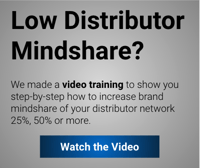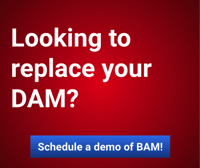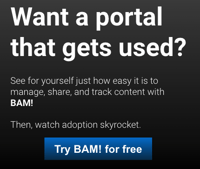As I work my way through PSU’s part-time MBA program, I’m exposed to all manner of new ideas; many of which are good. Like most good ideas, they seem obvious after you’ve heard them. One such idea I’ve been exposed to is netnography.
Netnography is a branch of ethnography that leverages the power of the Internet to enable real insights into your customers (or prospective customers).
The idea is simple: people are talking about the problem you’re trying to help them solve. Lots of people. Doing lots of talking. Netnography provides a structured framework for sifting through those conversations and discovering what signals appear out of the noise.
Netnography allows you to collect primary data (as opposed to secondary data, such as general demographics or survey data about a market you purchase through a third party) in a very cost-effective manner. Prior to netnography, collecting primary data was an expensive, time-consuming affair: you had to hire sociologists or social psychologists to construct surveys that minimized bias and asked the right question, and ensure that the surveys were conducted in a manner that was representative of the population and free from bias. While netnography is not immune from myopia or bias, it can be performed much more affordably and, as an observational data collection technique, can offer some important insight into the needs of people in your target market.
The process starts by identifying the market, the type of problems you expect to see (don’t be too rigid here, lest you fail to observer real problems that you didn’t anticipate), the context in which these problems arise, and the populations experiencing the problems. The idea here is to identify the reasonable parameters for your research effort, not to try to guess what you’re going to find. For example, if you’re in the business of manufacturing cutlery, you don’t need to pay attention to people who are buying cars or computers, but you shouldn’t look for restaurants that are expressing frustration that the available cutlery is too flimsy: perhaps that’s not the problem people are experiencing at all, and by looking for that, you are making it more difficult to see the real problems.
Once you’ve narrowed the broad parameters of your research, you can start to construct a list of places on the Internet your target population might be discussing this topic. Those places will differ substantially by industry. For example, B2C consumer goods manufacturers will find a wealth of data in customer reviews (think Amazon.com customer revices). Service companies will also find valuable data in reviews (think Yelp), whereas B2B companies might have to look more to industry forums and blogs for their target population.
Let’s look at a specific example. Since Pop Art does a lot of work for Freightliner Trucks, I’ll construct a small netnographic study to demonstrate the technique. Since you can’t buy a truck through Amazon.com, there won’t be any customer reviews there. There might be some information to be found in Yelp reviews of Freightliner dealerships, but typically those reviews focus on the dealership experience, not the truck itself. Many drivers discuss the merits of trucks on social media, though, with Facebook being particularly popular in this market segment (blogging is also popular, and if I were conducting a thorough netnographic survey, I would spend a significant amount of time identifying popular blogs devoted to trucking).
The next step in the netnographic process is to construct a code book. A code book is an impressive-sounding name for a document that attempts to identify broad themes, and how people feel about them. The idea is that by categorizing the things that people are saying, you can start to observe the emergency of significant signals.
There’s no one right way to construct a code book: they will be different based on the study and the market. For this simple example, I’m going to try to identify benefits drivers are seeking (broken into broad and specific), their sentiment (1=extremely negative, 2=negative, 3=neutral, 4=positive, 5=extremely positive), and the number of times that they mention each benefit.
One important aspect of netnography is that it captures original, unaltered language. Different people can make different inferences from the same data, so it’s important to include the original transcript so that inferences can be cross-validated.
Here’s an example from a Facebook post about the :
“Already up to 13,000 miles on the [Cascadia Evolution] I drive. The ride gives Volvo lovers a run for their money while the handling is excellent even in yesterday’s 25 MPH direct crosswind with gusts of 40 and only 25,000 pounds in the box (a 40,000 pound load would have handled even better). So far, I have also seen fantastic fuel economy even in extreme cold, typically getting high 6s-low 7s with air temperatures well below freezing. It’s been nice so far!”
Here’s how I might record this in the code book:
| Benefit Category | Specific Benefit | Sentment | Count | Notes | Transcript |
|---|---|---|---|---|---|
| Performance | Ride | 4 | 1 | Owner compares ride favorably to Volvo. | Already up to 13,000 miles… |
| Performance | Handling | 5 | 2 | Owner calls handling “excellent”, even in high wind. | Already up to 13,000 miles… |
| Performance | Fuel economy | 5 | 2 | Owner calls fuel economy “fantastic”. | Already up to 13,000 miles… |
In this process, there are a lot of judgement calls: is this “positive” or “extremely positive”? Does mentioning something parenthetically count as a second reference? Do I ignore the “It’s been been nice so far!” closing sentence? (I did choose to ignore it since it was reinforcing the previous points instead of referring to a specific benefit.)
I would repeat this process over and over again, from different sources (blogs, competitor Facebook pages, Twitter) until clear signals started to emerge. The more things are talking about something (positively or negatively), the more they care about it. Negative sentiment across the board could indicate an unserved need. Negative sentiment for a specific benefit with respect to competitors could indicate a strength to reinforce.
Like so many of the frameworks and tools we are learning in my MBA program, they do not magically produce insight: rather, they are structured frameworks that provide focus and direction. The insight still must come from careful analysis and consideration.


